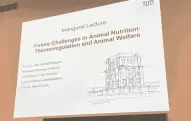In Germany, 23 percent of the population has immigrated since 1950
 In 2021, 14.2 million people who have immigrated since 1950 will live in Germany. This was announced by the Federal Statistical Office with reference to the microcensus. Accordingly, the share of immigrants in the population was 17.3 percent. Another 4.7 million persons (5.7 percent) were direct descendants of immigrants. These individuals were themselves born in Germany, but both parents had immigrated to Germany since 1950. The proportion of people with a history of migration since 1950 thus totaled 23 percent.
In 2021, 14.2 million people who have immigrated since 1950 will live in Germany. This was announced by the Federal Statistical Office with reference to the microcensus. Accordingly, the share of immigrants in the population was 17.3 percent. Another 4.7 million persons (5.7 percent) were direct descendants of immigrants. These individuals were themselves born in Germany, but both parents had immigrated to Germany since 1950. The proportion of people with a history of migration since 1950 thus totaled 23 percent.
In addition, for a further 3.7 million people (4.5 percent) who were born in Germany, one of their parents had immigrated to Germany since 1950.
In an EU comparison, Germany in 2021 was above the average of all 27 member states of 10.6 percent with a share of immigrants in the population of 17.3 percent, according to the results of the European statistics authority Eurostat, but in seventh place rather than at the top. The highest shares were in Malta at 22.3 percent, Cyprus at 22.1 percent and Sweden at 21.9 percent. The countries with the lowest shares of immigrants were Bulgaria, Romania and Poland, each with less than one percent.
The Federal Statistical Office emphasized that these were results for 2021. The effects on population development as a result of the Russian attack on Ukraine could not yet be mapped.
The Federal Statistical Office published figures of this kind for the first time, based on a concept of immigrants (first generation) and their direct descendants (second generation). This concept had been recommended by the Federal Government's Expert Commission on the Framework Conditions for Integration Capability in 2021. According to this definition, persons have an immigration history if either they themselves or both of their parents have immigrated to the present-day territory of Germany since 1950. Persons who have only one parent who immigrated since 1950 were not counted as part of the population with an immigration history according to the expert commission's recommendation.
The recommendation was justified on the grounds that the new concept was analytically clearer than that of "migration background". It refers only to the criterion of "migration experience" and does not mix it with nationality. In addition, the new concept is less complex and more comparable internationally. According to the Federal Statistical Office, the previous concept of migration background will continue to be published in parallel for the time being in order to make the differences to the concept of immigrants transparent and to ensure the continuity of the time series.
The microcensus is a sample survey in which about 1 percent of the population in Germany is interviewed each year. All data are based on self-reports by respondents. In order to be able to make statements about the total population from the data collected, the data are extrapolated using key figures from the population update. The results refer to the population in private primary households (82.3 million persons in 2021) and not to the population in collective housing.
Image by Kalhh









































